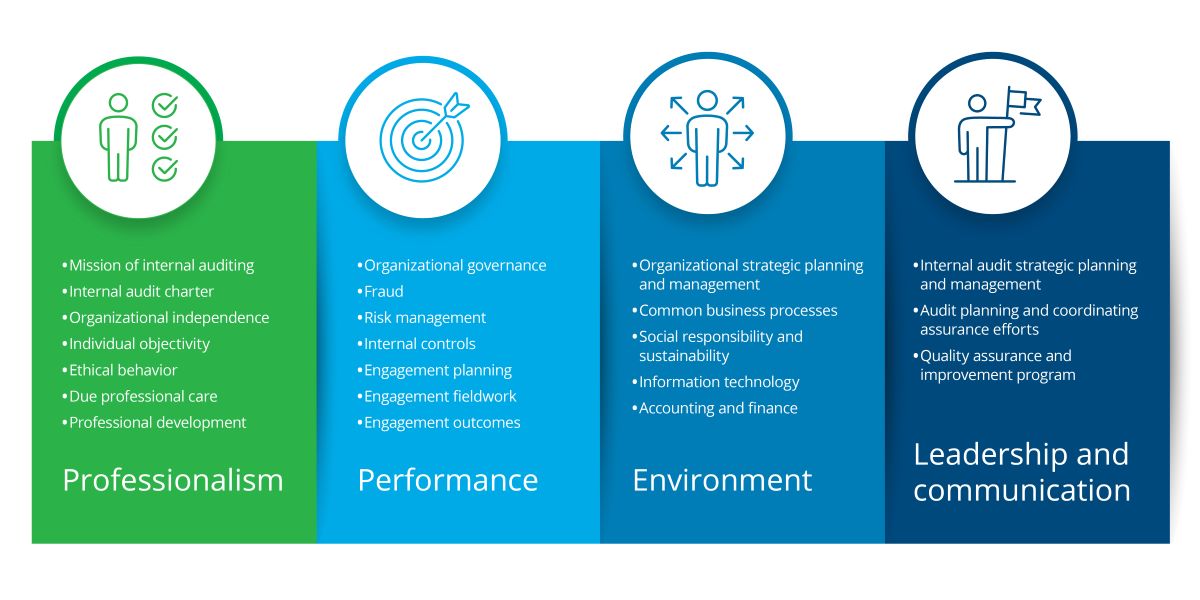Internal audit competencies and the gaps that exist has been saved

Analysis
Internal audit competencies and the gaps that exist
Advancing core capabilities that go beyond the foundational level
The Internal Audit Foundation, in collaboration with Deloitte, conducted a global survey—Assessing Internal Audit Competency—to identify areas in which internal auditors were highly developed and those where gaps existed. Our report outlines five key insights that help identify these gaps. Also, explore the areas where internal auditors could be doing more to drive value.
The expectations on internal auditors are rising. They are constantly being asked to enhance their value to their organizations. So, along with delivering high-impact results, they are expected to also evolve their internal audit competencies. This puts a renewed focus on the professional development of internal auditors. An establishment of core competencies can help internal auditors realize their passions and personal goals and stay competitive and relevant throughout their career journeys.
In fact, in September 2020, The Institute of Internal Auditors’ (IIA) released a new, comprehensive framework for the professional development of internal auditors. This competency framework helps auditors acquire the knowledge and skills necessary to navigate the challenges and opportunities before them. The framework comprises 22 core knowledge areas across four professional pillars: professionalism, performance, environment, and leadership & communication.

Source: IIA's Internal Audit Competency Framework
In October 2020, the Internal Audit Foundation, in collaboration with Deloitte, conducted a global survey, ‘Assessing Internal Audit Competency’, to complement the launch of the framework. As part of the survey, responses were received from 1,181 internal auditors across 90 countries and career levels. The survey studied the current state of internal audit competencies in the field and identified the gaps. Internal auditors were asked to assess their level of competency across 28 competencies on a scale of 0 to 5, with 0 being no awareness of the topic.
Five themes related to professional development and resource allocation emerged from the survey data. Delve deeper into these aspects to discover the several areas of improvement:
Assessed internal audit competencies are highly relevant and provide practitioners with a firm foundation to support organizations in achieving their strategic objectives.
Survey respondents perceived all 28 competencies within the framework as being more than moderately relevant, with all competencies receiving an average relevance score of 3.3 or greater. Moreover, 75% of the assessed competencies were viewed as being highly relevant. In terms of competency ratings, nearly 40% of the core areas were perceived to be advanced, suggesting that internal audit organizations have built a strong foundation for providing high-quality insights in areas that are essential to the business.
Across all regions, professionalism competencies (individual objectivity and ethical behavior) were rated 4.1 or higher in both relevance and competence. It was also found that the certified respondents reported higher overall competence in each of the four knowledge areas in the framework highlighting the value of obtaining certification in the profession.
Competency levels for critical technologies and emerging risks do not align with the perceived relevance of these areas for adding value to the organization.
Despite the criticality of digital technologies, many auditors do not believe they have the skills needed to provide effective assurance and advisory services in these areas. This misalignment can be quantified as a “competency gap” i.e., the difference between the respondent’s competency level in a specific knowledge area and the perceived relevance of that area to their duties. Survey findings revealed competency gaps in the technology areas of information technology control frameworks, data analytics, security and privacy, agile auditing methodologies, and areas of fraud assessment and investigation and risk management.
As new risks emerge and businesses turn to new technologies and methodologies to help them adapt to a rapidly changing environment, the internal audit function must keep pace. If internal auditors do not continuously evolve their capabilities, the internal audit function risks not being able to fulfill its mission.
Resource allocations need to remain adequate in core knowledge areas where internal auditors already have a high degree of competency.
The survey found that large resource gaps exist in five core knowledge areas that are perceived to be highly relevant to an internal audit function’s ability to add value to the business—risk management, internal control, communications (including soft skills, relationship building, and reporting), organizational independence, and due professional care.
If resource shortages in terms of training, talent development, and staffing continue, an organization risks not being able to evolve. It could reach a plateau or even backsliding in areas that were once viewed as a bedrock of competency and integrity. It should begin by prioritizing resource allocation toward the largest critical competency gaps.
Auditing emerging or innovative knowledge areas should be a priority.
The survey also focused on assessing the profession’s capacity to audit six emerging/ innovative areas—business continuity and crisis management, dynamic risk assessment, cybersecurity, extended enterprise risk management (EERM), cloud and virtual computing environments, and disruptive technologies—that are becoming increasingly important. Survey findings show internal audit functions are least equipped to audit cloud and virtual computing environments and disruptive technologies. Further analysis of responses indicated that only 38% of those leading internal audit functions felt their staff had the skills and capabilities to audit more than three of these innovative and emerging areas.
Organizations should identify competencies that are necessary to perform those audits and assess if the function has those skills or if they need to be acquired through training.
Digital maturation remains slow, allowing internal auditors to advocate for change by articulating the value they could add if adequately enabled by technology.
The survey also explored the state of innovation within internal audit functions by asking respondents to rate the maturity of their methodologies, tools, and processes of agile auditing, analytics, process automation, and cybersecurity. While 15% of respondents reported their functions have no innovation programs, of those that do have programs, 62% indicated their capabilities are foundational or below. This delay in exploring state-of-the-art tools and techniques could affect their ability to keep pace with digitalization in other areas of the business. It also suggests that many functions may not be fully leveraging the skills of their highly trained audit professionals, because they have not made significant strides in digitalization.
It is an opportunity for internal audit professionals to advocate for change by communicating with their CAEs and articulating the value they could add if adequately enabled by digital technology. More tenured audit professionals also have an opportunity to move their functions forward by raising the bar on the digital proficiencies expected among new hires.
Conclusion
It is not news that skill gaps and resource constraints exist within internal audit functions, but the survey findings imply that a fresh approach is needed to deal with them. Even as the profession has generally become stronger in its core competencies, some critical knowledge areas—particularly those pertaining to digital technologies and emerging risks—are lagging considering their relevance.
Internal audit needs to be ahead of the curve in implementing technology tools to improve the efficiency and effectiveness of audit services. Such tools are increasingly necessary to provide timely advice to stakeholders and help management identify emerging risks and responses. To address the remaining competency gaps, internal audit functions may need to shift their thinking about resource allocation and talent development to place greater emphasis on innovative and emerging knowledge areas. Download the full report to study the findings in detail.
Recommendations
Advancing internal audit risk assessment capabilities
Why it’s time to invest in AI-powered solutions



